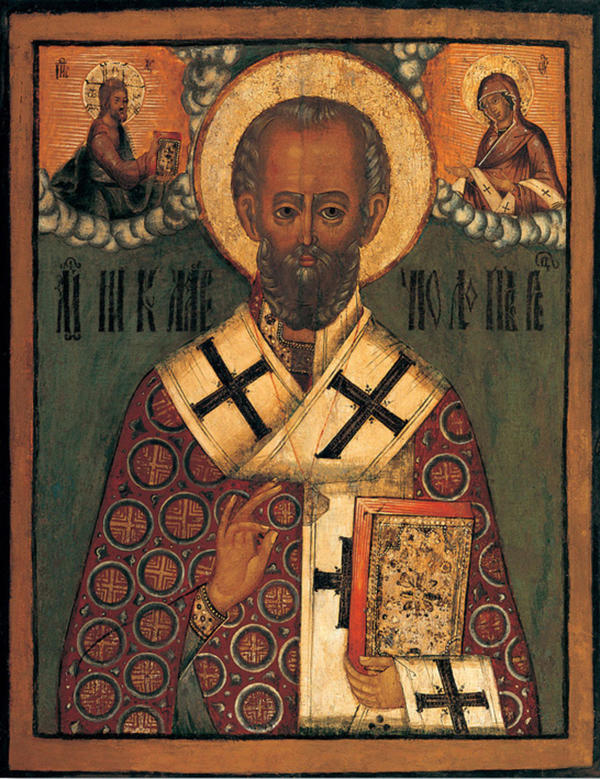Saint Nicholas of Myra
Время создания
Late 17th – early 18th century
Размер
91,6x75,2 cm
96×74.2×3.7 cm
96×74.2×3.7 cm
Техника
Wood, tempera
0
Открыть в приложении#1

Автор неизвестен
Святой Николай Мирликийский
#3
#2
Saint Nicholas was an archbishop of Myra in Lycia in the 3rd century BCE. During the persecution of Christians Diocletian ordered to have him seized, thrown in the dudgeon and tortured until he gave up his faith. Nicholas was released from captivity by Emperor Constantine I who came to power early in the 4th century. St. Nicholas of Myra returned to his calling. According to the legend, he resurrected the dead and saved travellers from execution. He once saved three maidens from dishonour as their father, to earn a living, planned to place them in a brothel. St. Nicholas threw a purse with gold coins in their window and it landed in a sock that hung drying above the fireplace. Hence the tradition of putting gifts in the sock by the fireplace, while in the Catholic Church St. Nicholas transformed into a fairy-tale Santa Claus.
St. Nicholas was venerated as early as in the 4th century, soon after his death. The cult of St. Nicholas became popular in Russia with the introduction of Christianity there. The earliest image of the saint dates back to the 11th century and is to be found in the Saint Sofia’s Cathedral in Kiev.
#4
Iconography and technique
#6
The St. Nicholas of Myra icon was painted in the late 17th — early 18th century somewhere around Rostov. The wooden panel is covered by a linen cloth and a few coats of the primer, levkas: a mixture of chalk, glue and oil. The main image is painted over the levkas.
#5
The artists kept to the traditional iconography with St. Nicholas shown in the bishop’s vestments, the phaelonion, and with the Gospel in his hand. The phaelonion was a sleeveless coat which looked somewhat like a modern-day poncho. The saint has hanging from a thin red thread on his chest an octagonal panhagia, a small locket of an icon encrusted with precious stones. A panhagia sometimes had a piece of a saint’s relics.
The upper part of the icon shows the Mother of God with the omophorion, the episcopal band with crosses, and an image of Jesus Christ with the Gospel. According to the legend, many of the saint’s contemporaries had visions where the Theotokos was putting the omophorion over him, and Jesus handing him a copy of the Gospel. In some icons, the book is open on the page with the text for the saint’s liturgy.
#7
The icon was in the collection of an artist, Vladimir Igoshev, who in 2000 presented it to the Arts Gallery of the Generations Foundation of the Khanty-Mansy Autonomous District. Eleven years later the icon was transferred to the museum.
#8
State Museum of Fine Arts of Khanty-Mansiysk
читать дальшескрыть
00:00
00:00
1x
Saint Nicholas of Myra
Время создания
Late 17th – early 18th century
Размер
91,6x75,2 cm
96×74.2×3.7 cm
96×74.2×3.7 cm
Техника
Wood, tempera
0
Открыть в приложении
Поделиться

